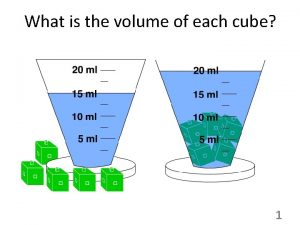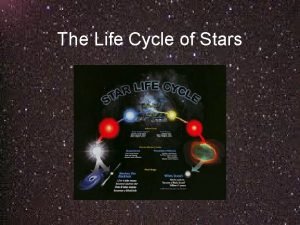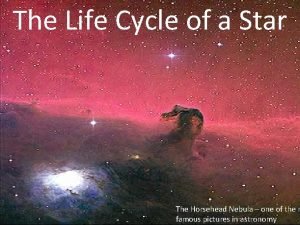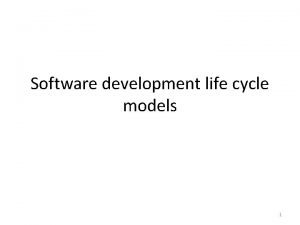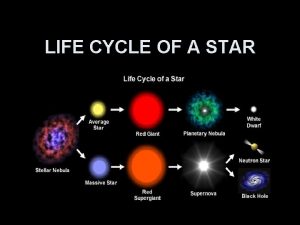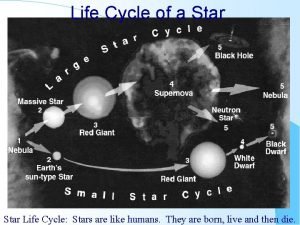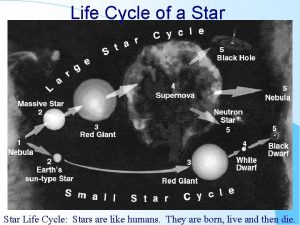Life Cycle of a Star Star Formation Formed










- Slides: 10

Life Cycle of a Star

Star Formation • Formed when a huge interstellar gas cloud (typically hydrogen) condenses due to gravity. • As the cloud gets smaller, heat is generated and particles move more. This allows for fusion of hydrogen atoms.

Hydrogen Fusion (birth of a star) • 2 Hydrogen atoms collide hard enough to form 1 larger Helium atom • A tiny bit of matter seems to disappear but actually it is converted into energy (E = mc 2). • This energy is released as heat and light.

Star Death • When Hydrogen fuel (atoms) run out, Helium fusion begins. • When Helium runs out, the outer layers cool and the star swells (red-giant phase) • Next phase depends on the mass of the star

Star Death • 1. Mass of Sun or less (most stars) - Outer layers eject leaving just the core - Core contracts and becomes very dense (white dwarf) - This gradually cools and fades away.

Star Death • 2. More massive than the Sun - Core contracts and begins fusing heavier elements up to iron. - Eventually fusion stops and core collapses - Explosive ejection of outer layers (Supernova explosion) - Dense core left (neutron star) - Neutron star may become a black hole if massive enough More massive stars lead the shortest lives!! They burn their fuel quickly!

Leftovers • Stars recycle their matter as it is released in space. • It is used to form new stars, planets, & even us! • We are made of star dust!


Hertzsprung-Russell Diagram • Scatter graph of stars showing the relationship between Absolute Magnitude (brightness) and temperature • Stars are classified according to their color, size, mass, luminosity, temperature • Most stars lie on the Main Sequence band • Star’s mass determines the star’s place on the Main Sequence


